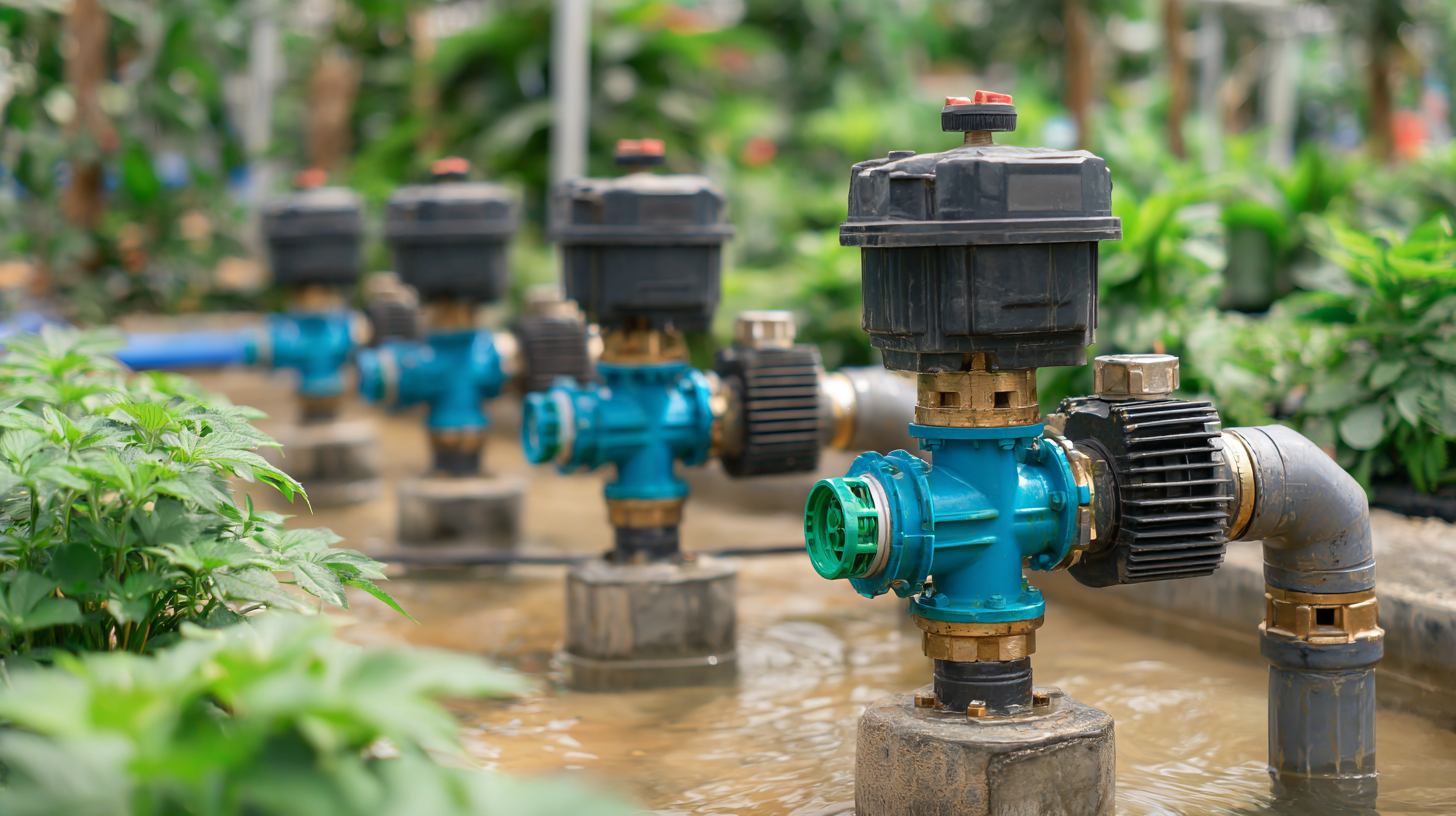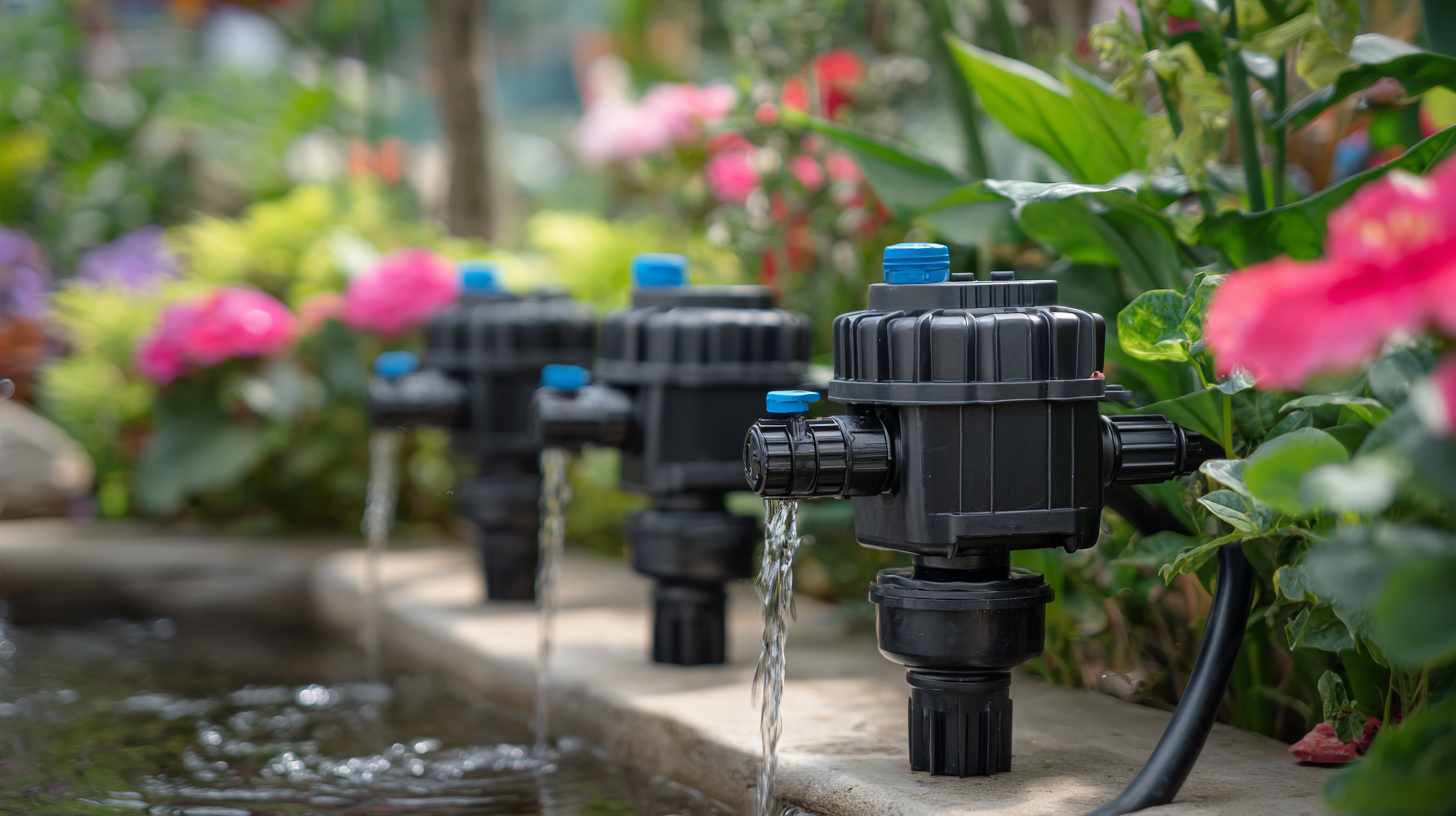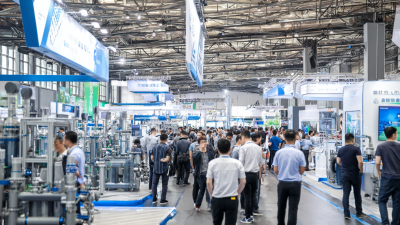
Universal Pumping | High Pressure Pumps
High Pressure Pumps for Difficult to Pump Slurry, Sludge, and Food Waste.
When it comes to maintaining a healthy and thriving home garden, choosing the right filter pumps is essential. According to a recent report by Market Research Future, the global water pump market, which includes filter pumps, is expected to grow at a CAGR of 5.1% from 2021 to 2026. This growth is attributed to the increasing need for effective water management in residential gardening and landscaping. Proper filtration is critical, as it helps ensure clean water circulation, promotes aquatic plant health, and prevents algae growth. With a variety of filter pumps available, selecting the optimal model can significantly impact your garden's aesthetics and ecological balance. In this ultimate guide, we will explore key factors to consider when selecting filter pumps, helping you to make informed decisions that enhance your garden’s sustainability and beauty.

When selecting the right filter pump for your home garden, it's essential to understand the various types available and how they cater to different needs. According to a report by the National Gardening Association, nearly 60% of homeowners utilize some form of water feature or garden pond, creating a significant demand for effective filtration systems. The two most common types of filter pumps are submersible and external pumps. Submersible pumps, designed to operate underwater, often have a quieter operation and are generally easier to install, making them ideal for smaller ponds or water gardens.
On the other hand, external pumps are recommended for larger installations requiring higher flow rates. A study published in the Journal of Environmental Horticulture indicates that external pumps typically offer greater energy efficiency, handling larger volumes of water with less power consumption. Homeowners should consider the specific needs of their garden, including the size of the water feature, the volume of water, and the type of flora and fauna present. By understanding the characteristics and advantages of each type of filter pump, gardeners can make an informed choice that enhances the health and aesthetic appeal of their outdoor spaces.
When selecting a filter pump for your garden, it's crucial to consider several key features that directly impact the efficiency and longevity of your pump system. One of the primary aspects is the pump's flow rate, typically measured in gallons per hour (GPH). According to the Water Quality Association, the ideal flow rate should circulate the total volume of your pond or water feature at least once every two hours. For instance, if your pond holds 1,000 gallons, you'll need a filter pump with a minimum flow rate of 500 GPH. This ensures optimal filtration and keeps the water clear and healthy for aquatic life.
Another critical factor is the pump's head height, which refers to the maximum height the pump can effectively move water. Industry reports suggest that selecting a pump with a suitable head height is vital for achieving proper water circulation and oxygenation. Typically, for garden fountains or waterfalls, a head height of 5 to 10 feet is sufficient. Additionally, consider the energy efficiency of the pump, as energy-efficient models can reduce operational costs by up to 50%, according to findings from the Department of Energy. With these considerations in mind, gardeners can choose a filter pump that not only meets their aesthetic goals but also supports the ecological health of their gardens.
When it comes to maintaining a thriving home garden, water quality is paramount. This is where choosing the right filter pump can make all the difference. According to the "2022 North American Garden Supply Market Report," the demand for effective water filtration solutions has surged by 30% as gardeners increasingly recognize the importance of clean water for plant health and growth. The right filter pump not only improves water clarity but also reduces the levels of harmful pathogens and nutrients, promoting a healthier ecosystem.

Among the top filter pumps recommended for optimal water quality, the AquaClear 70 stands out for its versatility and efficiency, ideal for gardens of various sizes. Its multi-stage filtration system ensures the removal of debris, ammonia, and nitrates, which are crucial for preventing algae bloom. Additionally, the PondMaster 400 is praised for its energy efficiency, using up to 60% less power than traditional pumps, thus catering to environmentally conscious gardeners. These options reflect the latest trends in sustainable gardening practices, as reported by the "2023 Sustainable Gardening Study," which highlights that over 50% of homeowners now prioritize eco-friendly products in their gardening routines.
When choosing a filter pump for your home garden, it's essential to weigh the
pros and cons of budget-friendly versus premium options.
Budget-friendly filter pumps generally attract those new to gardening or operating on a limited budget.
They can be efficient for smaller setups and often come with basic features that meet the needs of an
average garden pond or water feature. However, the trade-off might include
shorter lifespans and less effective filtration, which could lead to the need for
more frequent replacements and maintenance.
 In contrast, premium filter pumps offer superior performance, longevity,
and advanced features such as enhanced filtration systems, energy efficiency, and quieter operation. These pumps
are designed for larger applications and can handle more demanding environments, ensuring your garden water
remains clean and clear. While they require a higher initial investment,
the durability and reliability of premium pumps often result in
cost savings over time, making them a worthwhile consideration for serious gardeners. By assessing your specific
gardening needs and budget, you can make an informed decision that best
serves your outdoor space.
In contrast, premium filter pumps offer superior performance, longevity,
and advanced features such as enhanced filtration systems, energy efficiency, and quieter operation. These pumps
are designed for larger applications and can handle more demanding environments, ensuring your garden water
remains clean and clear. While they require a higher initial investment,
the durability and reliability of premium pumps often result in
cost savings over time, making them a worthwhile consideration for serious gardeners. By assessing your specific
gardening needs and budget, you can make an informed decision that best
serves your outdoor space.
When it comes to maintaining filter pumps for your home garden, regular upkeep is essential for ensuring longevity and optimal performance. One of the first maintenance tips is to clean the pump regularly. Debris and dirt can accumulate in and around the pump, leading to reduced efficiency. Make it a habit to check the pump every couple of weeks, particularly during peak gardening seasons, and remove any buildup that could obstruct water flow.
Another important tip is to inspect the seals and connections for wear and tear. Over time, seals can degrade and lead to leaks, which not only waste water but can also damage surrounding areas in your garden. If you notice any signs of deterioration, replacing these parts promptly can prevent bigger issues down the line. Additionally, consider storing your pump in a sheltered location during harsh weather conditions, as extreme temperatures can adversely affect its lifespan. Adopting these maintenance practices will help keep your filter pump running smoothly and effectively throughout the gardening season.
| Pump Model | Flow Rate (GPH) | Power (W) | Max Head (ft) | Maintenance Frequency | Estimated Lifespan (Years) |
|---|---|---|---|---|---|
| EcoFlow X100 | 800 | 45 | 15 | Every 3 months | 5-7 |
| AquaMax 3000 | 3000 | 70 | 20 | Every 6 months | 10 |
| GardenPro 750 | 750 | 40 | 12 | Every 3 months | 6-8 |
| HydroFlow 2000 | 2000 | 60 | 18 | Every 4 months | 8-10 |
| Streamline 1500 | 1500 | 50 | 15 | Every 6 months | 7-9 |






Universal Pumping
625 Apache Trail
Woodstock, GA 30189
Mon - Fri | 9:00 AM - 5:00 PM
Universal Pumping is staffed with industry professionals with 20-45 years experience with high pressure pumping systems. We represent only the “elite producers” in pump manufacturing: Britain’s EMS and Germany’s EMMERICH. Our engineering and manufacturing approach is conservative, and we do not use “guess work” in the design or sales of our pumping and filtration equipment.



